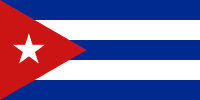 List of Insurance Companies in Cuba – World Insurance Companies Logos. By clicking on the logo of each insurance company can obtain a set of update information that each insurer offers via the Internet.
List of Insurance Companies in Cuba – World Insurance Companies Logos. By clicking on the logo of each insurance company can obtain a set of update information that each insurer offers via the Internet.
List of Insurance Companies Logos in Cuba
List of Insurance Companies Logos In Cuba. Click on the logos for a great deal of vital information. Get the best assurance.
- All
Economy
The Economy of Cuba is a planned economy dominated by state-run enterprises. Most industries are owned and operated by the government and most of the labor force is employed by the state. Following the fall of the Soviet Union, the Communist Party encouraged the formation of cooperatives and self-employment.
In the year 2000, public sector employment was 76% and private sector employment, mainly composed of self-employment, was 23% compared to the 1981 ratio of 91% to 8%. Investment is restricted and requires approval by the government. The government sets most prices and rations goods to citizens. In 2009, this country ranked 51st out of 182 countries with a Human Development Index of 0.863; much higher than its GDP per capita rank (95th). In 2012, the country’s public debt was 35.3% of GDP. Inflation (CDP) was 5.5%. That year the economy GDP growth was 3%.
Housing and transportation costs are low. Cubans receive free education, health care and food subsidies. Corruption is common, although allegedly lower than in most other countries in Latin America.
The country achieved a more even distribution of income since the Revolution and the subsequent economic embargo by the United States. Following the collapse of the Soviet Union, Cuba’s GDP declined by 33% between 1990 and 1993, partially due to loss of Soviet subsidies and to a crash in sugar prices in the early 1990s. Yet Cuba retained relatively high levels of healthcare and education.
In the mid-1990s tourism surpassed sugar, long the mainstay of the Cuban economy, as the primary source of foreign exchange. Havana devotes significant resources to building tourist facilities and renovating historic structures. Cuban officials estimate roughly 1.6 million tourists visited yhis region in 1999 yielding about $1.9 billion in gross revenues. In 2000, 1,773,986 foreign visitors arrived in Cuba. Revenue from tourism reached US $1.7 billion. By 2012, some 3M visitors brought nearly £2 billion yearly.
The rapid growth of tourism has had widespread social and economic repercussions. This led to speculation of the emergence of a two-tier economy and the fostering of a state of tourist apartheid. This situation was exacerbated by the influx of dollars during the 1990s, potentially creating a dual economy based on the dollar (the currency of tourists) on the one hand and the peso on the other. Scarce imported goods – and even some of local manufacture, such as rum and coffee- could be had at dollar-only stores, but were hard to find or unavailable at peso prices.
As a result, Cubans who earned only in the peso economy, outside the tourist sector, were at a disadvantage. Those with dollar incomes based upon the service industry began to live more comfortably. This widened the gulf between Cubans’ material standards of living, in conflict with the Government’s long term socialist policies.
Check out more insurance company logos in Caribbean Insurance Companies Logos.
List of Insurance Companies Logos in Cuba – World Insurance Companies Logos

